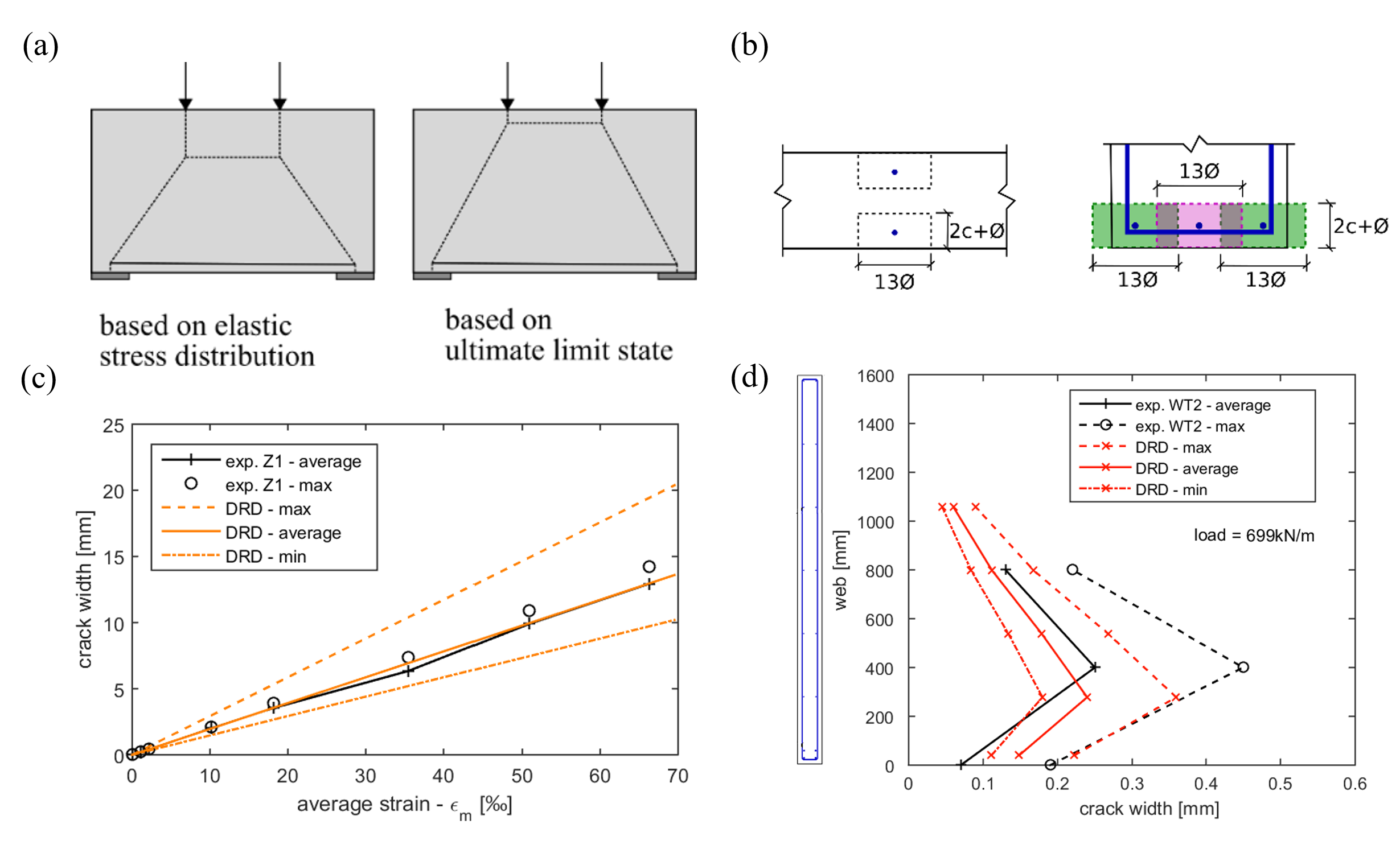Automated design of discontinuity regions of RC members
Author: Nils Schriber
Language: Englisch
Abstract
Discontinuity concrete regions are typically designed by strut-and-tie models or stress fields used as time-consuming hand-calculations leading to various solutions (a). By adding kinematic considerations (i.e. strain compatibility), these methods can be implemented in more efficient computer-aided stress field analysis. This work aims at developing a strategy to automatically implement tension stiffening in computer-aided stress fields to cover aspects as deformation capacity and serviceability criteria.
The developed tension stiffening strategy is based on the mechanically consistent Tension Chord Model. However, its general application is not well defined, as there is no procedure to mechanically compute the effective tension area of concrete associated to each reinforcing bar in a general case. Based on the literature, this thesis describes a first concept applicable for any reinforced concrete specimen. The effective tension area of concrete is assumed as a rectangular area around each rebar. One side of the rectangle is limited by a distance of twice the concrete cover plus the reinforcement bar diameter. The other side is 13 times the diameter of the bar (b).
The proposed concept is verified by recalculations of different types of reinforced concrete experiments. This work shows appropriated crack width predictions, using the proposed concept to calculate the effective tension area of concrete, for different reinforced concrete members. Experimental crack widths of direct tension and pure bending tests can be described well numerically (c). The phenomenon of high crack widths in low reinforced webs of concrete beams can be reproduced well too (d). Furthermore, the concept allows the calculation of a local crack width at a dapped end of a beam.
The developed empirical concept is a successful first intent towards an appropriate simplified solution to calculate the effective concrete area in tension for any reinforced concrete member. Further work is required to develop a mechanically consistent approach accounting for this aspect.

